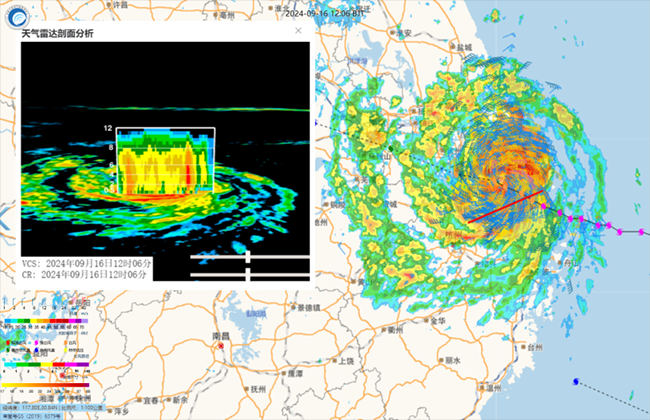Shanghai, China's bustling financial hub, was brought to an unprecedented standstill on Monday as Typhoon Bebinca, the strongest storm to directly hit the city in over seven decades, made landfall. The Category 1 typhoon, which struck early in the morning, unleashed destructive winds and torrential rains, causing widespread disruption and forcing the evacuation of hundreds of thousands of residents.
Typhoon Bebinca made its impact felt as it crashed into Shanghai with wind speeds reaching up to 151 kilometers per hour (94 mph) near its eye, according to the China Meteorological Administration. This marks the strongest storm to hit the city since Typhoon Gloria in 1949. The storm, which had been intensifying as it approached, finally made landfall around 7:30 a.m. in an industrial suburb southeast of the city, impacting nearly 25 million people.
The city, typically known for its relentless pace, found itself at a complete halt. More than 400,000 residents were evacuated from at-risk areas as the storm approached. Rescue operations were in full swing, with over 56,000 workers deployed across the city. Despite the intensity of the storm, only one injury had been reported by early afternoon, showcasing the effectiveness of the emergency response.
The storm's timing during the Mid-Autumn Festival, a significant public holiday in China, added to the disruption. With many people traveling for the holiday, the typhoon led to the cancellation of more than 1,400 flights from Shanghai's two major airports and over 570 passenger trains. The city's extensive metro system also experienced disruptions, with some services suspended, while major highways and elevated roads were either closed or subjected to severe speed restrictions.
In a city known for its vibrant lifestyle and attractions, the storm forced the closure of popular destinations, including the Shanghai Disney Resort, Jinjiang Amusement Park, and Shanghai Wild Animal Park. The shutdowns extended to many businesses, parks, and ferry services as the city braced for the storm's full impact.
Videos circulated on social media, capturing scenes of an eerily quiet Shanghai, with streets deserted and businesses shuttered. Footage from Douyin, China's version of TikTok, showed staff at Shanghai Disney Resort taking precautionary measures, such as taping trash bins to fences to prevent them from being blown away by the fierce winds.
The typhoon left a trail of destruction in its wake. More than 10,000 trees were reported to have been uprooted across the city, and there were reports of power and water outages in several neighborhoods. In response to the widespread damage, Shanghai authorities set up makeshift shelters in exhibition centers and school gyms, offering refuge to displaced residents.
The neighboring provinces of Zhejiang and Jiangsu, which were also in Bebinca's path, adopted similar safety measures. By Monday afternoon, more than 1,600 flights across the region had been canceled, further highlighting the storm's far-reaching impact.
Shanghai, unlike other regions in China, is not typically in the direct path of strong typhoons. Most storms of this magnitude tend to make landfall further south. Prior to Bebinca, the city had only been directly hit by two typhoons-Typhoon Gloria in 1949 and another in 2022-along with a few severe tropical storms, according to the China Meteorological Administration.
Bebinca is the second major storm to hit China this month, following the deadly Super Typhoon Yagi, which devastated the southern province of Hainan and caused significant damage across Southeast Asia. Yagi, a Category 4 hurricane, claimed four lives and left a trail of destruction in its wake.






